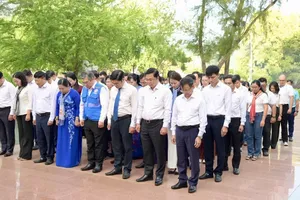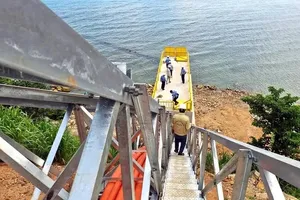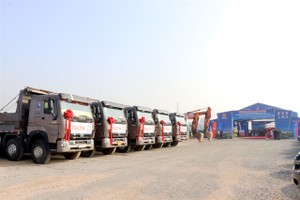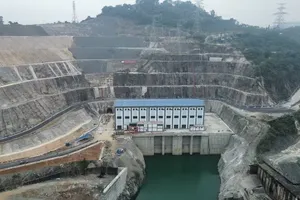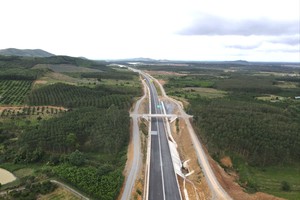The Central Highlands have a network of many rivers such as Se San, Se Re Pok and Ba Rivers, providing both spiritual and material solace to local residents from hundreds of years. However, over the last few years, hydro power plants, sand dredging and wastewater flowing from plants have caused heavy pollution and contamination to the river waters.
Landslides
Se Re Pok River emerges from the Krong Ana River in Dak Lak Province and Krong No River in Dak Nong Province. Today, all the main rivers and their tributaries face landslide threat due to sand quarrying.
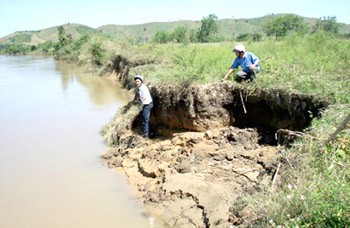
Chu Van Khoa, Chairman of the People’s Committee in Buon Choa Commune of Krong No District in Dac Nong Province said that over the last 10 years the Krong No River has been badly affected from sand dredging, which is causing its bank to collapse, sweeping away the rice fields of local residents.
Since the beginning of this year, over 150 hectares of cultivable land has slid into the river.
Everyday from 3am to 5pm, about 50 boats from the neighboring district of Krong Ana come to indiscriminately dredge sand.
Mr. Khoa says the commune has already reported to the district authorities and has tried hard to put a stop to this. However, there are logistic problems as the river is located on the borders of Krong No and Krong Ana districts.
On the other side of the Krong No River in the Ea Na Commune of Krong Ana District, tens of tipper lorries transport sand dredged from the river everyday, making the over two-kilometer road in the Quynh Ngoc Village into a dust track.
Pollution
Since early 2010, the Se Re Pok River has seen masses of fish dying in its polluted water stretching from Buon Ma Thuot town in Dak Lak Province to Cu Jut District in Dak Nong Province.
In Gia Lai Province, the Ba River water has turned a gaudy red on a 500m section running through Dong Commune in Kbang District.
The Dinh Ach family at the commune lives on 500 square meters of rice cultivation, whose output has plummeted over the last two years due to wastewater flow from a tin ore plant belonging to the Hoang Anh Gia Lai Group.
Mr. Ach says that all rice fields are as contaminated as the nearby streams due to the excessive flow of wastewater.
In An Khe town, the Ba River gives off a foul smell. Under the Ba river bridge, the river has shrunk into black water puddles full of garbage because plants along the river consistently release wastewater into the river for the past several years.
In recent months, the condition has worsened as the An Khe-Kanak hydro power plant has accumulated water, thus depleting the Ba River.
Slowly dying
Along Highway 24 in Kon Tum Province, local residents let their cows graze in the middle of the Dak Pne River, which resembles a small rivulet now.
A similar condition exists at the stretch of the Ba River in Gia Lai Province as hydro power plants have reserve water. Along 30 kilometers of the river, from Krong Pa District to Ayunpa town, grass and brushwood grows in abundance in the middle of the river.
Ksor Thin, farmer in the district said that he changed from fishing to breeding cows a few years ago, when he could not cast a net to catch fish.
Related article:
Se Re Pok River sees numerous dead fish in Central Highlands








